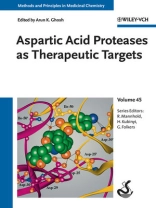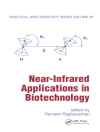In this ground-breaking practical reference, the family of aspartic acid proteases is described from a drug developer’s perspective. The first part provides a general introduction to the family of aspartic acid proteases, their physiological functions, molecular structure and inhibition. Parts two to five present various case studies of successful protease inhibitor drug design and development, as well as current and potential uses of such inhibitors in pharmaceutical medicine, covering the major therapeutic targets HIV-1 protease, renin, beta-secretase, gamma-secretase, plasmepsins and fungal proteases.
A ready reference aimed primarily at professionals in the pharmaceutical industry, as well as for anyone studying proteases and their function.
Table des matières
OVERVIEW OF ASPARTIC ACID PROTEASES
Introduction to the Aspartic Proteases Family
Aspartic Acid Proteases, Structure, Function and Inhibition
Human Aspartic Proteinases
Structure-based Drug Design Strategies for the Inhibition of Aspartic Acid Proteases
HIV-1 PROTEASE FOR THE TREATMENT OF HIV/AIDS
HIV-1 Protease: Role in Viral Replication, Protein-Ligand X-ray Crystal Structures and Inhibitor Design
First generation FDA Approved HIV protease inhibitors
Second-Generation Approved HIV Protease Inhibitors for Treatment of HIV/AIDS
Design, Conception and Clinical Development of Darunavir, a HIV-1 Protease Inhibitor to Combat Drug Resistance
Development of Protease Inhibitors and Challenges to Drug-Resistance of HIV-1
RENIN FOR TREATMENT OF HYPERTENSION
Discovery and Development of Aliskiren, the First-in-Class Direct Renin Inhibitor for the Treatment of Hypertension
Evolution of Diverse Classes of Renin Inhibitors Through the Years
GAMMA-SECRETASE FOR TREATMENT OF ALZHEIMER’S DISEASE
Chemistry and Biology of gamma-Secretase as a Possible Target for Alzheimer’s Disease
Gamma-Secretase Inhibition: An overview of Development of Inhibitors for Alzheimer’s Disease
BETA-SECRETASE FOR TREATMENT OF ALZHEIMER’S DISEASE
BACE – An (Almost) Perfect Target for Staving Off Alzheimer’s Disease
Discovery of Memapsin 2 (BACE1), Design of Inhibitors and Drug-design Tools
Peptidomimetic BACE1 Inhibitors for Treatment of Alzheimer’s Disease: Design and Evolution
Non-Peptide BACE1 Inhibitors: Design and Synthesis
PLASMEPSINS AND OTHER ASPARTIC PROTEASES AS DRUG TARGETS
The Plasmepsin Family as Antimalarial Drug Targets
Design and Synthesis of Plasmepsin Inhibitors for Treatment of Malaria
Fungal aspartic proteases as possible therapeutic targets
A propos de l’auteur
Arun K. Ghosh studied chemistry at the University of Calcutta and the Indian Institute of Technology, Kanpur. He obtained his Ph.D. at the University of Pittsburgh and pursued post-doctoral research at Harvard University. He was a research fellow at Merck Research Laboratories prior to joining the University of Illinois, Chicago as an assistant Professor in 1994. In 2005, he moved to Purdue University where he is currently the Ian P. Rothwell Distinguished Professor of Chemistry and Medicinal Chemistry. His notable honors include, Arthur C. Cope Scholar Award, Robert Scarborough Medicinal Chemistry Award, American Association for the Advancement of Science, University of Illinois University Scholar, National Merit Scholar of India. He has published over 200 research papers and holds numerous patents. Professor Ghosh’s research interests include diverse areas of organic, bioorganic and medicinal chemistry with particular emphasis on organic synthesis and protein-structure-based design of biomolecules.












